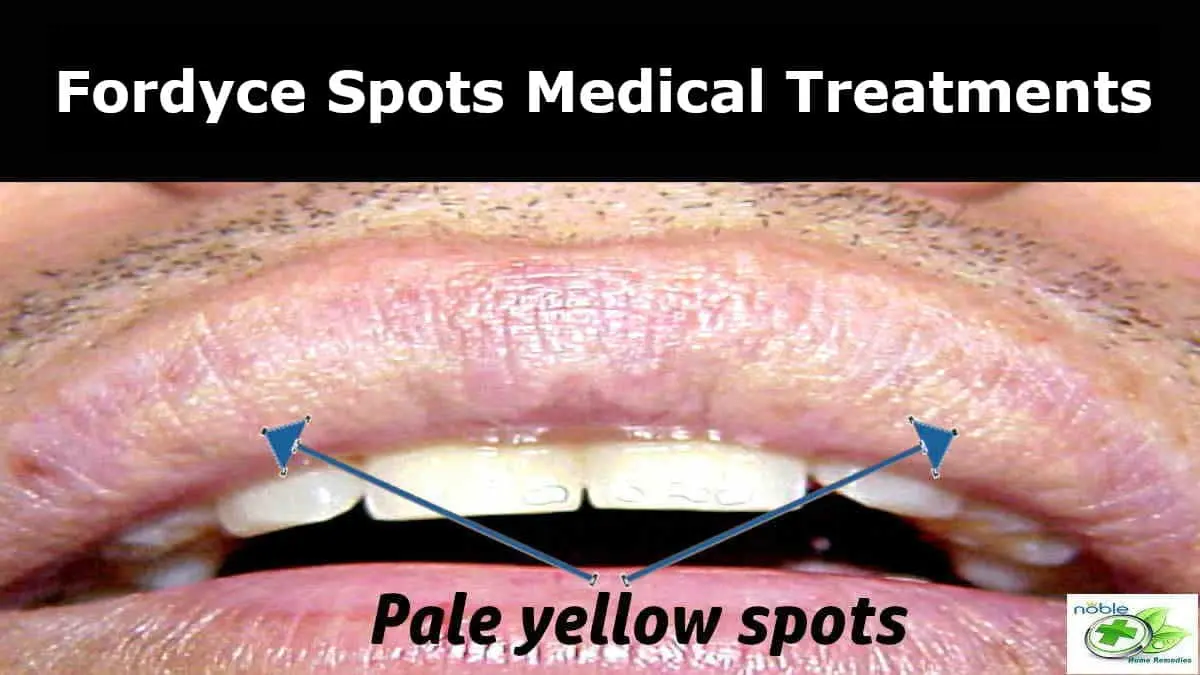Every now and then, our skin throws us a curveball. Perhaps you’ve noticed those tiny, raised bumps that seem to have appeared out of nowhere, especially around the lips or genitals. They may look like ordinary pimples at first glance, but there’s more to them than meets the eye.
Imagine this: You’re getting ready for an important event, a job interview, or a special date. You glance in the mirror, and there they are those perplexing, somewhat unsightly, but surprisingly common spots known as Fordyce spots. They can show up uninvited and catch anyone off guard.
Fordyce spots, those tiny, harmless sebaceous glands that sometimes become visible on the skin’s surface, can be an unexpected guest in our lives. While they’re typically benign and don’t pose any health risks, their appearance can lead many to ponder a common question: Should I pop them?
This blog post delves deep into the tempting proposition of popping Fordyce spots. We’ll explore the allure of achieving blemish-free skin and the potential pitfalls that come with it. But, above all, we’ll emphasize one crucial principle: safety first.
Popping Fordyce spots is a choice many consider, but is it the right one for you? Join us as we navigate the delicate balance between cosmetic goals and skin health, shedding light on the importance of making it safe.
Table of Contents
Understanding Fordyce Spots

Before we dive into the question of whether popping Fordyce spots is a safe choice, let’s start by gaining a clear understanding of what these enigmatic skin spots actually are.
Fordyce spots, named after the American dermatologist John Addison Fordyce, are a type of harmless skin condition characterized by the appearance of small, raised, and usually colorless or pale red bumps. These spots might resemble tiny pimples or whiteheads, but they are not associated with acne, pimples, or any other skin condition driven by clogged pores.
One of the distinctive features of Fordyce spots is their appearance. Unlike typical pimples or acne, which can be red, inflamed, or filled with pus, Fordyce spots are generally smooth to the touch and lack the redness or irritation often associated with skin blemishes. They can appear as singular spots or occur in clusters, making them more noticeable in some cases.
Fordyce spots have their favorite hangouts on the body. You’ll most commonly find them in the following areas:
- Around the Lips: Fordyce spots are frequently seen on the vermillion border of the lips. These spots can sometimes cause self-consciousness, especially if they become more pronounced.
- Genitals: Another common location for Fordyce spots is the genital area. They can appear on the shaft of the penis in males and on the labia in females. Their presence here can sometimes lead to concerns about sexual health, although they are entirely benign.
- Areola and Nipples: Fordyce spots can also occur on the areola (the darker area surrounding the nipple) and the nipples themselves. This can raise questions and anxieties for individuals who notice them.
One of the most important things to know about Fordyce spots is that they are not associated with any serious health conditions. They are not a sign of infection, cancer, or any underlying disease. Instead, they are a variation of the skin’s normal anatomy.
Why People Consider Popping Fordyce Spots
Fordyce spots, those inconspicuous yet sometimes pesky skin blemishes, often lead people to contemplate whether they should take matters into their own hands. But why do individuals consider popping Fordyce spots in the first place?
Cosmetic Concerns: One of the primary reasons people think about popping Fordyce spots is cosmetic in nature. These spots, while harmless, can be visually distressing. Their appearance, especially when they occur in prominent areas like the lips or genitals, can affect one’s self-esteem and body image. Many individuals simply desire a smoother, blemish-free appearance and believe that popping these spots might offer a quick solution.
Discomfort and Irritation: Fordyce spots, can sometimes cause physical discomfort or irritation. This discomfort is typically mild and includes sensations like itchiness or a slightly rough texture when touched. While these symptoms are usually not severe, they can be enough to make someone consider taking action, including the thought of popping Fordyce spots to alleviate the discomfort.
Lack of Awareness: Another reason people contemplate popping Fordyce spots is a lack of awareness about what these spots are. When these bumps first appear, they can be mistaken for other skin conditions like pimples. In some cases, individuals might not even realize that Fordyce spots are a normal part of their skin.
The Dangers of DIY Popping Fordyce Spots
While the temptation to pop Fordyce spots may be strong, it’s crucial to understand the potential risks and complications that come with the DIY approach. Here, we’ll explore the dangers of self-popping and why it’s often best to leave this task to the professionals.
1. Risk of Infection
Popping any type of skin blemish, including Fordyce spots, carries a significant risk of infection. Our skin is home to various bacteria, and when we break the skin’s protective barrier, we create an opportunity for these bacteria to enter and multiply. Even with the best intentions and clean hands or tools, infection can still occur.
2. Inflammation
Infections can lead to redness, swelling, pain, and the potential need for antibiotics. In severe cases, untreated infections can lead to more serious complications. It’s essential to recognize that Fordyce spots, while unsightly to some, are not a medical emergency, and attempting to pop them can create unnecessary health risks.
3. Scarring and Skin Damage
Another significant danger of popping Fordyce spots is the potential for scarring and long-term skin damage. Fordyce spots are often near delicate areas like the lips or genitals, where the skin is thinner and more prone to scarring. Popping them can cause trauma to the skin, leading to visible scars that may be more distressing than the original spots.
4. Delayed Healing
Damaging the skin by popping or squeezing can also slow down the body’s natural healing process.
The Importance of Professional Advice

Popping or squeezing the bumps will not cause them to go away but endanger your skin as mentioned above. Improper popping techniques, such as using excessive force or unsterilized tools, can cause damage beyond the visible surface. This damage can disrupt the normal functioning of sebaceous glands and lead to more Fordyce spots in the future.
Given these potential dangers, it’s clear that popping is not the safest or most effective way to deal with Fordyce spots. Instead, it’s advisable to seek professional advice from a dermatologist for medical treatments against Fordyce spots.
Safe Alternatives to Popping Fordyce Spots
While the urge to pop Fordyce spots is understandable, there are safer and more effective alternatives that can help you achieve the clearer skin you desire. In this section, we’ll explore some of these options and why consulting a dermatologist is a wise choice.
Non-Invasive Fordyce Spot Treatments: Rather than resorting to popping Fordyce spots, consider non-invasive treatments that are both safer and more suitable for addressing Fordyce spots. One such option is laser therapy. Laser treatment has gained popularity in recent years for effectively reducing the visibility of Fordyce spots.
Laser therapy for Fordyce spots works by targeting the blood vessels that supply the spots, effectively shrinking them and making them less noticeable. It’s a safe and precise method performed by trained professionals.
Topical treatments: These may help reduce the appearance of Fordyce spots over time. These treatments often contain ingredients that regulate sebum production, addressing the root cause of these spots. There are reliable natural remedies to treat Fordyce spots such as jojoba oil, and argan oil for you to try at home.
Preventing Fordyce spots: Prevention primarily involves maintaining good skincare practices. Stay hydrated, maintain a healthy diet, and practice good hygiene. Avoid excessive exposure to harsh sunlight and consider using sunscreen to protect your skin. Additionally, choosing non-comedogenic skincare products can prevent clogged sebaceous glands, which may contribute to the development of Fordyce spots.
Takeaway: Prioritize Your Skin Health
In the quest for flawless skin, the decision to pop Fordyce spots may seem tempting, but it’s crucial to prioritize safety and informed choices above all else. Here’s a recap of key takeaways from our discussion:
- Understanding Fordyce Spots: Fordyce spots are common, benign skin blemishes that often appear around the lips, genitals, and other areas. They don’t pose health risks, but their appearance can be a concern.
- Why People Consider Popping: Cosmetic concerns and discomfort are common reasons why individuals contemplate popping Fordyce spots. While the urge is understandable, it’s essential to evaluate the risks involved.
- The Dangers of DIY Popping: Attempting to pop Fordyce spots carries potential risks, including infection, scarring, and the spread of spots to other areas. Infection can be particularly concerning and may require medical treatment.
- Safe Alternatives: Non-invasive treatments, such as laser therapy, and professional advice from a dermatologist are safer and more effective alternatives to DIY popping. Consulting a dermatologist can provide tailored guidance and access to advanced treatments.
- Seeking Professional Guidance: Consulting a dermatologist is strongly recommended for evaluating and managing Fordyce spots. They can offer personalized advice and access to safe and effective treatments.
If Fordyce spots are causing concern, it’s best to consult with a healthcare professional or dermatologist for advice.
5 Sources:
Noble Home Remedies relies on peer-reviewed studies, academic research institutions, and medical associations for accuracy and reliability while avoiding tertiary references. Our editorial policy provides more information about how we ensure our content is accurate and up-to-date.
- Fordyce Spots by DermNet is all about skin
- Fordyce granules, Aka Fordyce spots by OpenLab
- Fordyce spots by Columbia University, New York
- Treatment of Fordyce Spots With CO2 Laser by Acamedia
- Understanding Fordyce Spots by HealthLine






